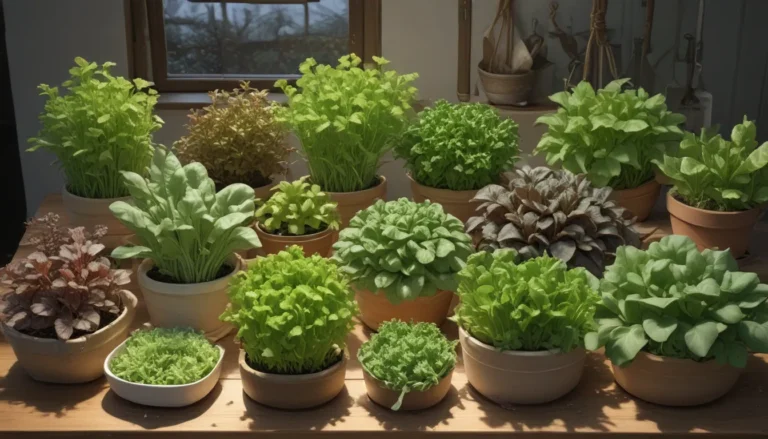Comprehensive Guide to Growing Cauliflower Successfully

Are you looking to add cauliflower, Brassica oleracea var. botrytis, to your home garden, but feeling a bit intimidated by its reputation as a challenging cool-weather crop? Fear not! In this detailed article, we will cover everything you need to know to successfully grow this unique vegetable in your own backyard.
Cauliflower is a cool-weather crop that belongs to the Brassicaceae family, along with broccoli, brussels sprouts, cabbage, collards, kale, and kohlrabi. Although it resembles broccoli, cauliflower has its own distinctive features, including dense, curd-like plant tissue with a soft texture and a mildly sweet, nutty flavor.
Cultivation and History
Cauliflower is a half-hardy biennial plant usually grown as an annual in USDA Hardiness Zones 2 to 11. Half-hardy means it can withstand some frost, but abrupt temperature changes can cause it to bolt prematurely. It is essential to pay close attention to the days to maturity when selecting seeds and consider your local climate.
Historically, cauliflower originated in the Eastern Mediterranean and has a rich cultural background dating back to the Middle Ages. Today, there are four main groups of cauliflower varieties, each with its unique characteristics and traits.
Propagation
There are two primary methods to start growing cauliflower plants: from seed or nursery seedlings. Starting seeds indoors in peat pots is recommended for an early summer harvest. It’s crucial to provide the right conditions for germination and gradually harden off seedlings before transplanting them into the garden.
Transplanting nursery seedlings is another option, ensuring to handle them carefully and plant them at the correct depth. Prior to planting, it’s advisable to conduct a soil test and work in organic compost or other amendments as needed for optimal growth.
How to Grow
Cauliflower thrives in well-draining soil with optimal nutrient levels. It requires consistent moisture, protection from extreme temperatures, and adequate spacing for proper air circulation. Fertilize with care using slow-release, balanced nutrient supplements to avoid root damage and burning.
Proper watering practices, along with temperature management techniques such as using floating row covers, can help maintain ideal growing conditions for cauliflower plants. Blanching white varieties is recommended to protect the heads from sun exposure and maintain their color and flavor.
Cultivars to Select
Cauliflower comes in various colors and sizes, offering a range of options for home gardeners. Consider selecting cultivars like ‘Flame Star’ or ‘Snowball Self-Blanching’ based on your growing conditions and preferences. Starting seeds of cool-weather varieties indoors can help ensure a successful harvest.
Managing Pests and Disease
As a member of the Brassicaceae family, cauliflower is susceptible to pests and diseases that can impact plant health and yield. Regular monitoring and early intervention are essential to address issues like aphids, cabbage loopers, and various fungal infections. Implementing preventative measures and exploring biological treatments can help protect your plants.
Harvesting and Storage
Harvesting cauliflower heads at maturity ensures optimal flavor and texture. Store freshly harvested heads in the refrigerator, or freeze cut florets for long-term preservation. Cauliflower can be enjoyed in various dishes, offering a mild, versatile cruciferous flavor rich in essential nutrients.
Recipes and Cooking Ideas
Experiment with different cauliflower recipes, such as mozzarella-smothered riced cauliflower stuffed peppers, vegan cauliflower Buffalo wings, or Indian spiced cauliflower fried rice. These creative dishes highlight the versatility and nutritional benefits of this vegetable.
Quick Reference Growing Guide
Use the quick reference growing guide to summarize key information on planting, soil requirements, companion planting, common pests, and diseases associated with growing cauliflower successfully in your garden.
In conclusion, growing cauliflower at home may seem challenging at first, but with careful planning, proper care, and attention to detail, you can cultivate a bountiful harvest of this nutritious vegetable. Embrace the unique characteristics of cauliflower varieties and enjoy the satisfaction of growing your own fresh, flavorful produce. Share your gardening experiences and tips with fellow enthusiasts to inspire others to embark on their own cauliflower-growing journey. Happy gardening!





